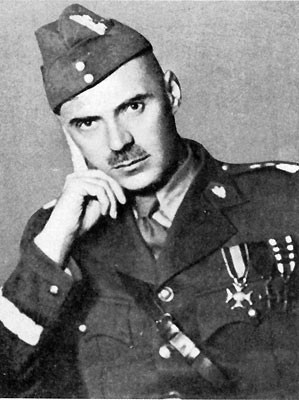
The 2nd Polish Corps, 1943–1947, was a major tactical and operational unit of the Polish Armed Forces in the West during World War II. It was commanded by Lieutenant General Władysław Anders and fought with distinction in the Italian Campaign, in particular at the Battle of Monte Cassino. By the end of 1945, the corps had grown to well over 100,000 soldiers.

Burnham, also known as Burnham Camp, is the largest army base in New Zealand's South Island. It is located 28 kilometres south of Christchurch on the Canterbury Plains in the Selwyn District, close to the town of Dunsandel. Burnham was named after Burnham Beeches, Buckinghamshire.

The Royal Corps of Transport (RCT) was a British Army Corps established to manage all matters in relation to the transport of men and material for the Army and the wider defence forces. It was formed in 1965 and disbanded in 1993; its units and trades were amalgamated into the Royal Logistic Corps. The Depot and Training Regiment RCT was at the former Buller Barracks in Aldershot garrison.

The Royal Malay Regiment is the premier unit of the Malaysian Army's two infantry regiments. At its largest, the Malay Regiment comprised 27 battalions. At present, three battalions are parachute trained and form part of the Malaysian Army Rapid Deployment Force. Another battalion has been converted into a mechanised infantry battalion while the remaining battalions are standard light infantry. The 1st Battalion Royal Malay Regiment acts as the ceremonial foot guards battalion for the King of Malaysia, and is usually accompanied by the Central Band of the Royal Malay Regiment. As its name suggests, the regiment only recruits ethnic Malays.

The Royal Army Service Corps (RASC) was a corps of the British Army responsible for land, coastal and lake transport, air despatch, barracks administration, the Army Fire Service, staffing headquarters' units, supply of food, water, fuel and domestic materials such as clothing, furniture and stationery and the supply of technical and military equipment. In 1965 its functions were divided between other Corps and the RASC ceased to exist; subsequently, in 1993, they in their turn became the "Forming Corps" of the Royal Logistic Corps.

The Malaysian Army is the land component of the Malaysian Armed Forces. Steeped in British Army traditions, the Malaysian Army does not carry the title ‘royal’ as do the Royal Malaysian Navy and the Royal Malaysian Air Force. Instead, the title is bestowed on selected army corps and regiments who have been accorded the honour by the Yang di-Pertuan Agong, who is the Supreme Commander of the Malaysian Armed Forces.
The Star of the Commander of Valour is a medal awarded by the Malaysian government. The award was established on 29 July 1960, and it was formally gazetted by an act of parliament on 11 August 1960. It is Malaysia's second highest gallantry award, coming in second only to the Grand Knight of Valour.

The Rejimen Askar Wataniah is the military reserve force of the Malaysian Army.
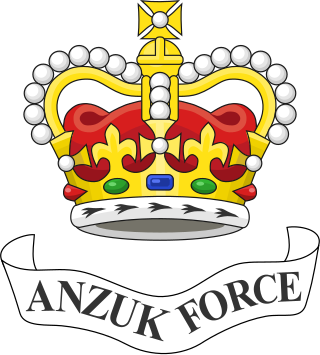
ANZUK was a tripartite force formed by Australia, New Zealand, and the United Kingdom to defend the Asian Pacific region after the United Kingdom withdrew forces from the east of Suez in the early 1970s. The ANZUK force was formed in Singapore on 1 November 1971 under Rear Admiral David Wells and disbanded on 31 January 1974.
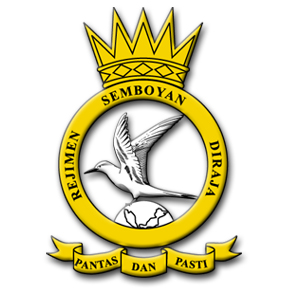
The Rejimen Semboyan Diraja is a combat support regiment of the Malaysian Army. It has the primary responsibility of establishing and maintaining secure military communications channels for the command and tactical elements of the Malaysian Army. It is also responsible for all electronic support, electronic warfare and early warning system for the Malaysian Army.
Royal Electrical & Mechanical Engineer Corps is a corps of the Malaysian Army that is responsible for the maintenance of all vehicles, mechanical and electrical equipment of the Malaysian Army, with the exception of heavy equipments of the Rejimen Askar Jurutera DiRaja and signals equipment of the Rejimen Semboyan DiRaja.

562 Parachute Squadron Royal Corps of Transport (Volunteers) was a minor unit that supported 44th Parachute Brigade (V).

Malaysia's armed forces, which encompasses three major branches, originate from the formation of local military forces in the first half of the 20th century, during British colonial rule of Malaya and Singapore prior to Malaya's independence in 1957. The branches have undergone several restructuring, but fundamentally includes the army, navy and air force.
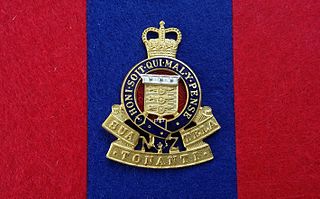
The ANZUK Ordnance Depot was established in 1971 to provide logistical support to Australian, New Zealand and British forces stationed in Singapore and Malaysia as part of ANZUK Force. It was commanded by a Royal Army Ordnance Corps officer of the rank of lieutenant colonel and staffed by Australian, New Zealand and United Kingdom personnel and Locally Employed Civilians. This organisation operated for only a short period. Australia changed Government in 1972 and the incoming Labor Government decided to withdraw Australia’s commitment to the region. This took effect in 1974 and was followed later by the withdrawal of the British forces. It was then decided that New Zealand should form its own Advanced Ordnance Depot, designated the New Zealand Advanced Ordnance Depot (NZAOD). This was the start of a commitment which was to last until December 1989.
The McLeod Reorganisation of Army Logistics was a major reorganisation of the British Army in the 1960s, principally affecting the Royal Engineers (RE), Royal Army Service Corps (RASC) and Royal Army Ordnance Corps (RAOC). Its principal outcome was the disbandment of the RASC and the creation of the Royal Corps of Transport (RCT). The committee was established at the direction of the Army Council in March 1963 and it was led by General Sir Roderick McLeod. The Committee worked quickly and its recommendations, with few exceptions, were officially notified to Parliament on 22 April 1964.

With the adoption of the Singapore strategy in the 1920s as a key cornerstone of Imperial Defence, Singapore and Malaya became the major British bases in the East, not only to defend British possessions in Asia, but also the dominions of Australia and New Zealand, who also contributed a large portion of the construction costs.
The Elite Forces of Malaysia are specialised, highly trained units drawn from various branches of the Malaysian military, law enforcement, and government agencies. In Malaysia, the term Elite Forces serves as an umbrella term encompassing special forces, special operations units, specialised firefighting teams, and other uniquely trained groups within the uniformed services.
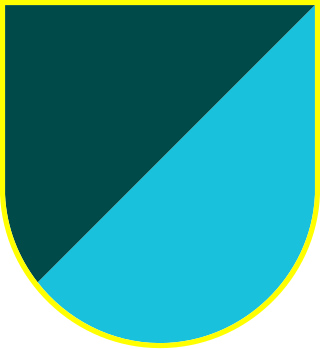
The 21st Special Service Group, also known as the Grup Gerak Khas and the 21st Special Forces Group, serves as the command for the Malaysian Army's special forces, the Gerak Khas. 21 SSG is a fighting formation within the Malaysian Army. This unit operate independently under the Malaysian Army and directly report to the Chief of Army. The headquarters of the 21 SSG are located at Sri Iskandar Camp in Mersing, Johor.














